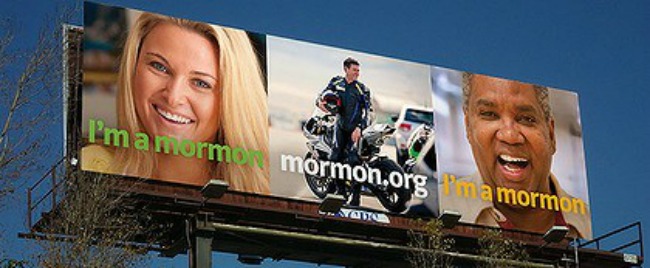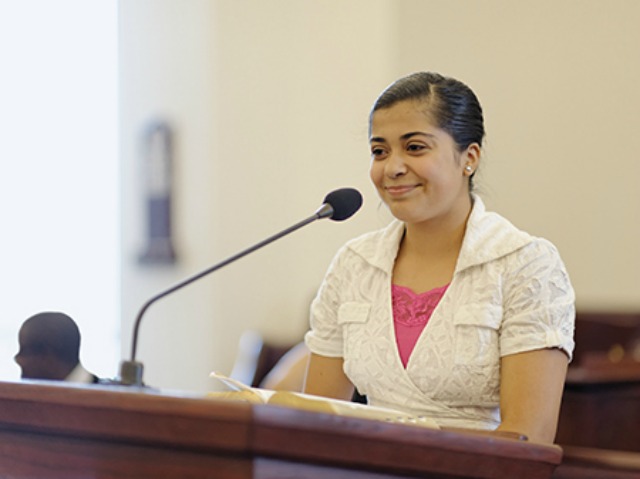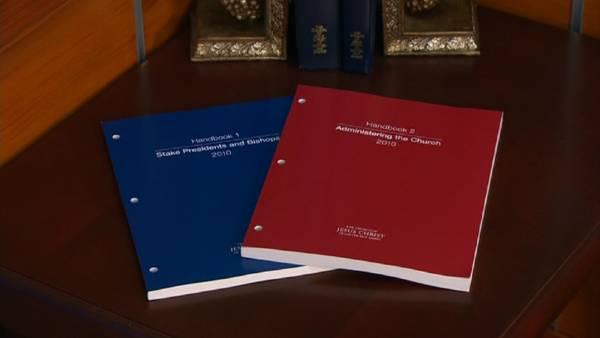Question
Gramps,
When and why is it that the church leadership considers it okay to brand everything as “Mormon” when the scriptures specifically say not to and when their own talks discourage the use of it in reference to the church? Examples include “mormon.org, I’m a Mormon media campaigns,” etc. It creates a lot of confusion and double speak and not much harmony. If they were to go by scriptural doctrine none of that would be branded that way. Reference D&C 115:4 and 3 Nephi 27: 7-8.
Kent
Answer
Dear Kent,
Church leadership is well aware of the name of the Church and has taken pains to see to it that media distributors know the name too. lds.org was launched in 1996. Back then, search engines were in their infancy (they were closer to a digital version of the yellow pages – or perhaps a comparison to your computer’s file structure might be more apt). You typed in the name of the site that you wanted, exactly how it is, or the machine told you that site did not exist. You can quickly see how little error there is in typing “lds” versus “thechurchofjesuschristoflatterdaysaints” (but hyphens are allowed, so should it be “thechurchofjesuschristoflatter-daysaints”? Wait, neither one is working. Is there a typo in there somewhere? Let me call my sister and ask her what it was again… after I hang up my modem. Never mind, I’ll just play minesweeper).
That’s well and good for members of the Church, who refer to their brothers and sisters as “Latter-day Saints”, but what of those outside of the Church, who only know them as Mormons? John D. Hays got a hold of the mormon.org and mormon.net domain and placed links to the official site, as well as provided links to other sites that may be of interest to saints online (such as Deseret Book, Deseret News, unofficial ward sites, and an apologetics site). In 2001, the Church saw the value in the domain name for those searching the Internet for information on “Mormons”. By this time, Google had gained search dominance and domain name was one of the criteria used for determining relevance. It still is. To see the value of such search engine optimization, compare the search results that you get when you look for “ask gramps” versus “ask grandpa”. You can argue until you’re blue in the face that a gramps is a grandpa and a grandpa is a gramps (and a Latter-day Saint is a Mormon and a Mormon is a Latter-day Saint) but when it comes to ranking, domain names can still make quite a difference. In the 2001 October Conference, Elder Oaks shared some new resources members could use to share the gospel (including pass-along cards). He announced:
“The Church has activated a new Internet site to which we may refer persons interested in obtaining information about the Church and its doctrine and how they can find a place to worship with us. Its address is www.mormon.org. For missionaries, the value and use of this new resource will emerge with experience. For members of the Church, it will help us answer the questions of friends directly or by referring them to the site. It will also allow us to send our friends electronic greeting cards that include gospel messages and invitations.” (Sharing the Gospel)
In the crowded space of the Internet, the Church has decided that when someone comes online and shouts “I have questions. Where’s the MORMON?!” that it will raise it’s hand rather than wait for the curious passerby to learn to address it as The Church of Jesus Christ of Latter-day Saints. It has also decided that since this person has already demonstrated only the most basic knowledge of the Church (by referring to it or the members by the term Mormon) that it will maintain a separate site focused on basic information and proselyting distinct from lds.org. And in case you’re wondering, thechurchofjesuschristoflatterdaysaints.org has been around since 1999 (it now redirects to mormon.org).
Your question goes beyond the Internet and includes public relations campaigns run by the Church. The Mormon Newsroom explained it best in an article about the so-called “Mormon moment” of 2007:
“That irony — being large and still largely misunderstood — recalls an experience following Hurricane Andrew. One local official thanked the many who helped in the cleanup, including members of the Mormon Church and members of The Church of Jesus Christ of Latter-day Saints. Thankful for the help, the official didn’t realize those helping hands came from the same denomination.”
The Church has long struggled with name recognition and made efforts to bridge the gap of outsiders’ perceptions of Mormons with the message of The Church of Jesus Christ of Latter-day Saints. The current program, born of the “Mormon moment” revival just four years after the first (see here, for a better context of Mormons in popular culture at the time), was explained by Elder Ballard in the October 2011 General Conference. He cites the same scriptures you do, even more scriptures than you do, about the importance of the name of the Church. It must bear Christ’s name, he testified.
“Because the full name of the Church is so important, I echo the revelations from the scriptures, the First Presidency’s instructions in letters of 1982 and 2001, and the words of other Apostles who have encouraged the members of the Church to uphold and teach the world that the Church is known by the name of the Lord Jesus Christ. This is the name by which the Lord will call us at the last day. It is the name by which His Church will be distinguished from all others.” (The Importance of a Name)
Elder Ballard also refers to the term “Mormon” as a nickname for members of the Church. He states “While nicknames do not have the same status or significance as actual names, they can be properly used,” and then gives us some examples – including your example of mormon.org.
“While Mormon is not the full and correct name of the Church, … it has become an acceptable nickname when applied to members rather than the institution. We do not need to stop using the name Mormon when appropriate, but we should continue to give emphasis to the full and correct name of the Church itself. In other words, we should avoid and discourage the term ‘Mormon Church.’ …
“Some may ask, what about the Internet sites such as Mormon.org as well as various Church-initiated media campaigns? As I said, referring collectively to members as Mormons is sometimes appropriate. As a practical matter, those outside of our faith come looking for us searching for that term. But once you open up Mormon.org, the proper name of the Church is explained on the home page, and it appears on each additional page on the site.” (Ibid.)
More examples can be found in the Mormon Newsroom’s style guide, emphasizing that we prefer to be referred to as “The Church of Jesus Christ of Latter-day Saints”, but if that’s too many words for your column or your soundbite, you may use the shorter name (still referencing the Savior) “The Church of Jesus Christ”. And failing all that, simply go with “the Church”. Members may be referred to as Mormons (given everyone’s familiarity with the term) but “Latter-day Saint” is preferred.
Gramps






